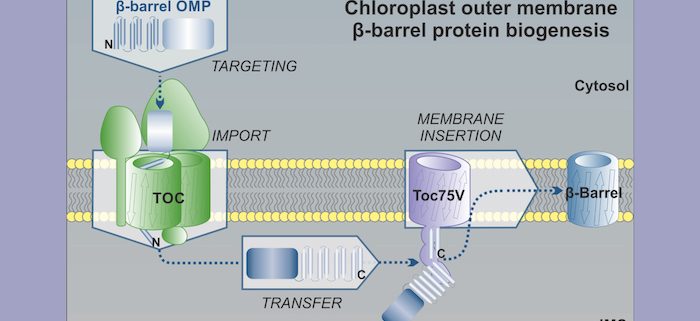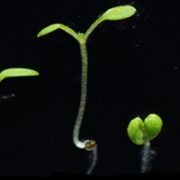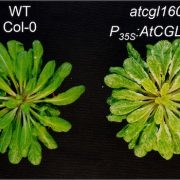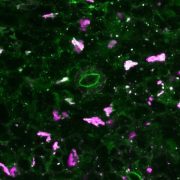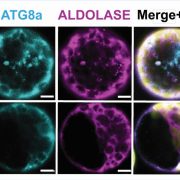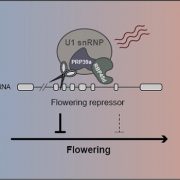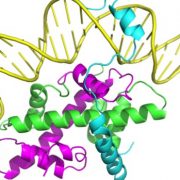Membrane Insertion of Plastidic β-barrel Proteins
Gross et al. describe how plastidic β-barrel proteins are inserted into the outer envelopes of plastids. The Plant Cell (2021) https://doi.org/10.1093/plcell/koab052
By Nicole Spies, Lucia Gross, and Enrico Schleiff
Background: Due to their endosymbiotic origin, chloroplasts possess both an outer and inner envelope membrane. 95% of all chloroplasts proteins are translated in the cytosol and are targeted to and imported into the correct sub-organellar compartment. Most plastidic proteins are synthesized with an N-terminal cleavable targeting signal and are transported across the outer membrane by the translocon at the outer chloroplast membrane (TOC). The outer membrane (OM) of endosymbiotic organelles contains so-called β-barrel proteins, which are required for protein, metabolite, and solute transport. How these β-barrel proteins reach the chloroplast is largely unknown, as most do not possess a defined targeting signal. Similarly, the components necessary for their insertion into the OM are ill-defined, but it has been speculated that the protein TOC75-V might be involved.
Question: We asked which structural or sequence-based requirements exist for the proper targeting to chloroplasts and membrane insertion of plastidic β-barrel proteins. Furthermore, we aimed to confirm the proposed role of TOC75-V in the process of β-barrel membrane insertion by analyzing the complex formed during this process.
Findings: The N-terminal region of plastidic ß-barrel proteins contains the information required for translocation, while the C-terminal region is important for membrane insertion. We confirmed that β-barrel translocation across the OM requires the TOC complex, while membrane insertion depends on Toc75-V, as β-barrel proteins form an intermediate complex with TOC75-V in the intermembrane space. Furthermore, some β-barrel proteins possess a motif in the last C-terminal amino acids that seems to be required for the interaction with TOC75-V. While this interaction tolerates the addition of few amino acids at the C-terminus, larger C-terminal extensions as well as mutations of the putative signal inhibit the association with TOC75-V. Based on our results, we propose a mechanistic model for the insertion of plastidic β-barrel proteins into the outer envelope membrane.
Next steps: Cytosolic factors are likely involved in the guidance of plastidic β-barrel proteins to the organelle. Similarly, we assume that the observed intermediates require additional factors in the intermembrane space involved in the membrane insertion of β-barrel proteins. These possible interaction partners must be identified.
Lucia E. Gross, Anna Klinger, Nicole Spies, Theresa Ernst, Nadine Flinner, Stefan Simm, Roman Ladig, Uwe Bodensohn, Enrico Schleiff (2021). Insertion of plastidic β-barrel proteins into the outer envelopes of plastids involves an intermembrane space intermediate formed with Toc75-V/OEP80. Plant Cell https://doi.org/10.1093/plcell/koab052


